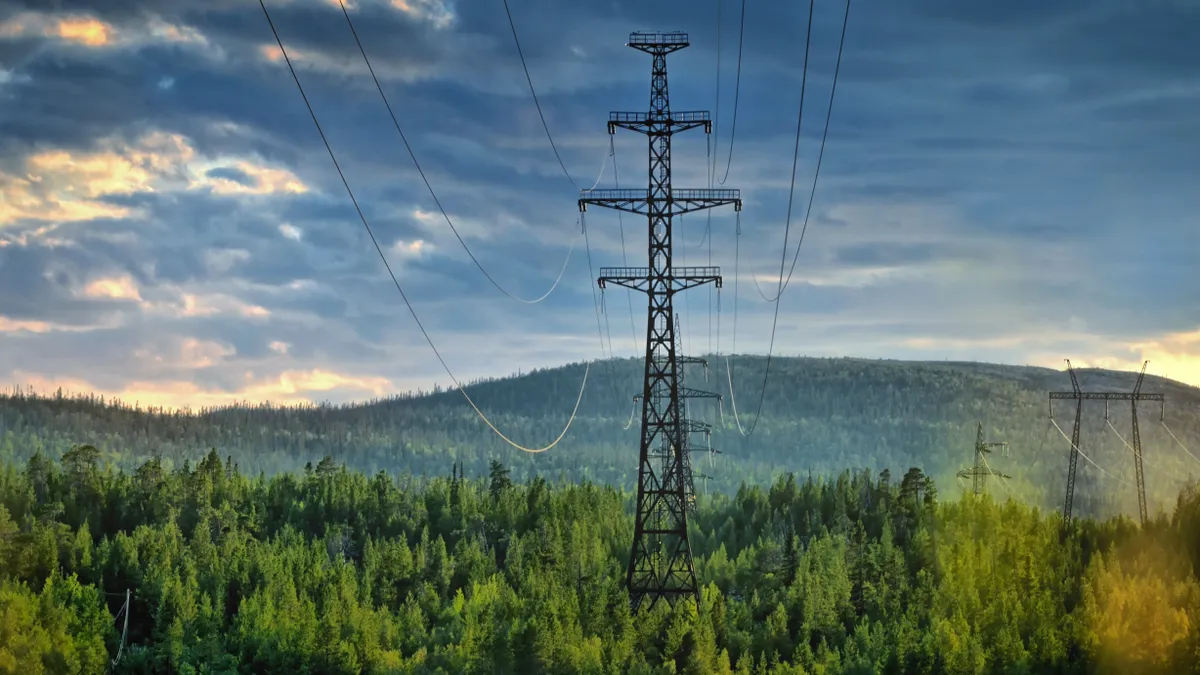Dive Brief:
-
The Federal Energy Regulatory Commission on Friday rejected a request by a National Grid subsidiary that it be allowed to recover its share of a planned $1.2 billion transmission line in upstate New York on a state-wide basis as well as for an extra 0.5% return on equity to reflect the alleged risks of building the project.
-
FERC said Niagara Mohawk Power Corp.’s requested 11.5% ROE in its proposed rate schedule was inconsistent with a settlement agreement that established its current transmission rate structure, which includes a 10.3% ROE limit.
-
Separately, FERC approved a request by a NextEra Energy subsidiary to be allowed to recover its costs for a planned transmission project in the Southwest Power Pool footprint if the project is never brought online. In a concurrence, FERC Commissioner Mark Christie outlined his opposition to several of the agency’s existing transmission incentives, saying they shift risks from the companies building the projects onto consumers.
Dive Insight:
The FERC decisions come as utilities and transmission companies are preparing for a major buildout of the U.S. transmission system in places like New York to access remote renewable energy facilities.
At the same time, FERC is considering changing the incentives it offers transmission developers for building power lines and related facilities.
In New York, the issue centers on Niagara Mohawk’s participation in the Smart Path Connect project, which is designed to help deliver emissions-free power to load centers. The utility has an estimated $535 million share in the project, which calls for upgrading existing Niagara Mohawk facilities and is slated to be operating before 2026. The New York Power Authority is the utility’s partner on the project.
In March, FERC granted Niagara Mohawk’s request for authorization to recover all of its prudently incurred costs for the project if it is canceled or abandoned for reasons beyond the utility’s control.
The commission, however, in its most recent decision balked at other proposed incentives, including a performance-based ROE, as well as a cost-recovery plan proposed by Niagara Mohawk.
“Niagara Mohawk’s proposed ROE is inconsistent with the 2015 [transmission service charge] ROE settlement, and Niagara Mohawk has failed to provide sufficient justification for why departure from that settlement is warranted,” FERC said.
In part, FERC said Niagara Mohawk failed to show why upgrading transmission facilities shouldn’t be covered by the settlement agreement.
FERC didn’t address Niagara Mohawk’s state-wide cost allocation methodology, saying the issue was moot because the commission rejected the tariff proposal.
NYPA supported Niagara Mohawk’s proposal, but it was opposed by the New York Public Service Commission, the New York Association of Public Power and the Municipal Electric Utilities Association of New York.
Separately, FERC approved NextEra Energy Transmission Southwest’s request for an “abandoned plant” incentive for its planned Minco-Pleasant Valley-Draper transmission project in Oklahoma. Under the incentive, a company can recover its costs for a project, even if it isn’t brought into service.
In a concurrence, Christie said the incentive is consistent with FERC’s transmission incentives policy, but that it illustrates why the commission needs to revisit those incentives.
“As this commission considers other potential reforms related to regional transmission planning and development, it is imperative that incentives like the abandoned plant incentive, [the construction work in progress] incentive, and [the regional transmission organization] participation adder are all revisited to ensure that all the costs and risks associated with transmission construction are not unfairly inflicted on consumers while transmission developers and owners stand to gain all the financial reward,” Christie said.
“Revisiting all these incentives is imperative at a time of rapidly rising customer power bills,” he said.















